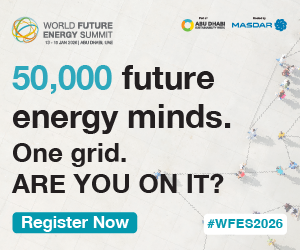Articles - Past and present news from The Energy Industry Times
Media Partners
Indonesian state utility to gradually retire coal power plants
- 4 years ago (2021-05-28)
- David Flin
Indonesia’s state electricity utility Perusahaan Listrik Negara (PLN) has said that it will retire its coal-fired power plants gradually in a phased move towards becoming carbon neutral.
IFC financing two wind power projects in Vietnam
- 4 years ago (2021-05-27)
- David Flin
The International Finance Corporation (IFC), a member of the World Bank Group, is funding the development and construction of two wind power projects in central Vietnam.
Japan to use ammonia at coal plant
- 4 years ago (2021-05-26)
- David Flin
Japan’s largest power generation company Jera, a joint venture between Tokyo Electric Power, Chubu Electric Power, and IHI Corp, announced plans to begin using ammonia as a fuel source at one of its existing coal-fired power plants.
Qatalum and GE sign deal for upgrade units
- 4 years ago (2021-05-25)
- David Flin
GE has signed an agreement with Qatalum to provide it with five Advanced Gas Path (AGP) upgrade units, maintenance services for 15 years for equipment at the 1080 MW power plant, and a suite of cybersecurity solutions.
G7 nations to end state financing for coal-fired power plants by end 2021
- 4 years ago (2021-05-24)
- David Flin
The G7 nations have agreed to end state financing of coal-fired power plants by the end of 2021, and to “mostly decarbonise” their electricity supplies in the 2030s.
GE Renewable Energy awarded contract for Tauernmoos Pumped Hydro Storage Power plant
- 4 years ago (2021-05-21)
- David Flin
GE Renewable energy has announced that it has been selected by the Austrian National Railway Operator, ÖBB, to supply and commission two 85 MW variable speed pumped storage turbines for the new Tauernmoos Pumped Hydro Storage Plant located in the Stubachtal Valley in Austria.
Eskom introduces load shedding as 10 units fail in 24 hours
- 4 years ago (2021-05-17)
- David Flin
Eskom has implemented rolling blackouts with immediate effect. The load shedding will last until Tuesday night, 18th May, the utility said in a statement.
SSE to develop plans for CCS at Peterhead, UK
- 4 years ago (2021-05-14)
- David Flin
SSE Thermal and Equinor have announced plans to jointly develop a new low-carbon power station at Peterhead, which could become one of the UK’s first power stations to be equipped with carbon capture technology.
US DOE awards $6.2 million for research into efficient hydrogen gas turbines
- 4 years ago (2021-05-13)
- David Flin
The US Department of Energy (DOE) has announced eight university-led projects will receive nearly $6.2 million in Federal funding for research and development projects aimed at advancing hydrogen as a high-performing, efficient gas for turbine-based electricity generation.
GE Renewable Energy and Toshiba announce offshore wind strategic partnership
- 4 years ago (2021-05-12)
- David Flin
Ge Renewable Energy and Toshiba Energy Systems and Solutions have announced that they have signed a strategic partnership agreement to localise critical phases of GE’s Haliade-X offshore wind turbine and support its commercialisation in Japan.









